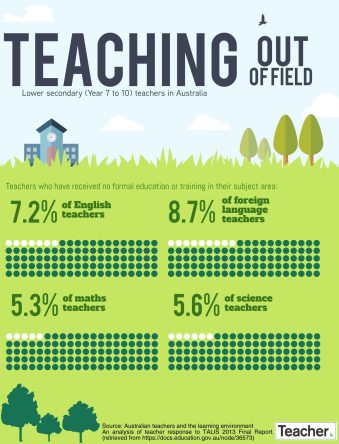While schools across the country, and indeed the world, are grappling with critical teacher shortages, it’s certainly no surprise to hear that out-of-field teaching would be occurring.
A new Deakin University report, co-written by the Australian Council for Educational Research (ACER) and Griffith University, looks at the issue of out-of-field teaching and proposes 46 recommendations.
As ACER’s Discover shares, in the report, the authors emphasise the need for more comprehensive data on the long-term impact of out-of-field teaching on teachers and students. They also highlight the need to develop a national definition for out-of-field teaching, as well as the importance of ensuring better support systems are available to these teachers.
Which subjects are most affected?
The lead author of the report, Associate Professor Linda Hobbs, told Discover there are 3 main reasons out-of-field teaching occurs:
- A lack of teachers at the school who are qualified to teach specific subjects
- Certain geographic areas don’t have enough teachers to meet demand
- Recruitment practices at a school may preference and emphasise qualities, rather than teacher specialisations.
She added that STEM (Science, Technology, Engineering and Mathematics) subjects are the most impacted.
Supporting out-of-field teachers
ACER Senior Research Fellow Paul Weldon says, ‘there could be incentives provided for teachers to upskill in another field, likely of less interest to them than the ones they trained in,’ Discover reports. ‘It's not enough to ensure the numbers of qualified teachers are there to meet demand – there is the issue of ensuring even distribution so that regional and rural areas aren't missing out while there is over-supply in metro areas,’ he says.
To find out more about this research, and to access the full report, read the full article: Report highlights need for more data to tackle out-of-field teaching, published in ACER’s Discover.
Related content
Earlier this year, Teacher brought you the story of Maths participation declining in Australian schools, where the Australian Mathematical Sciences Institute (AMSI)’s Dr Maaike Wienk shared that teacher shortages was a contributing factor to this decline. Read the full article here.
As a school leader in a secondary school, reflect on your current staff needs for STEM subjects. How many teachers are qualified to teach these subjects? What support are you offering to those teachers who are not qualified to teach these subjects?



